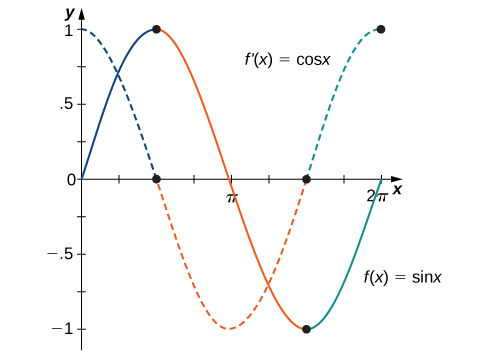| << Chapter < Page | Chapter >> Page > |

Find the derivative of
Using the product rule, we have
After simplifying, we obtain
Find the derivative of
By applying the quotient rule, we have
Simplifying, we obtain
A particle moves along a coordinate axis in such a way that its position at time is given by for At what times is the particle at rest?
To determine when the particle is at rest, set Begin by finding We obtain
so we must solve
The solutions to this equation are and Thus the particle is at rest at times and
A particle moves along a coordinate axis. Its position at time is given by for At what times is the particle at rest?
Since the remaining four trigonometric functions may be expressed as quotients involving sine, cosine, or both, we can use the quotient rule to find formulas for their derivatives.
Find the derivative of
Start by expressing as the quotient of and
Now apply the quotient rule to obtain
Simplifying, we obtain
Recognizing that by the Pythagorean theorem, we now have
Finally, use the identity to obtain
The derivatives of the remaining trigonometric functions may be obtained by using similar techniques. We provide these formulas in the following theorem.
The derivatives of the remaining trigonometric functions are as follows:
Find the equation of a line tangent to the graph of at
To find the equation of the tangent line, we need a point and a slope at that point. To find the point, compute
Thus the tangent line passes through the point Next, find the slope by finding the derivative of and evaluating it at
Using the point-slope equation of the line, we obtain
or equivalently,
Find the derivative of
To find this derivative, we must use both the sum rule and the product rule. Using the sum rule, we find
In the first term, and by applying the product rule to the second term we obtain
Therefore, we have

Notification Switch
Would you like to follow the 'Calculus volume 1' conversation and receive update notifications?